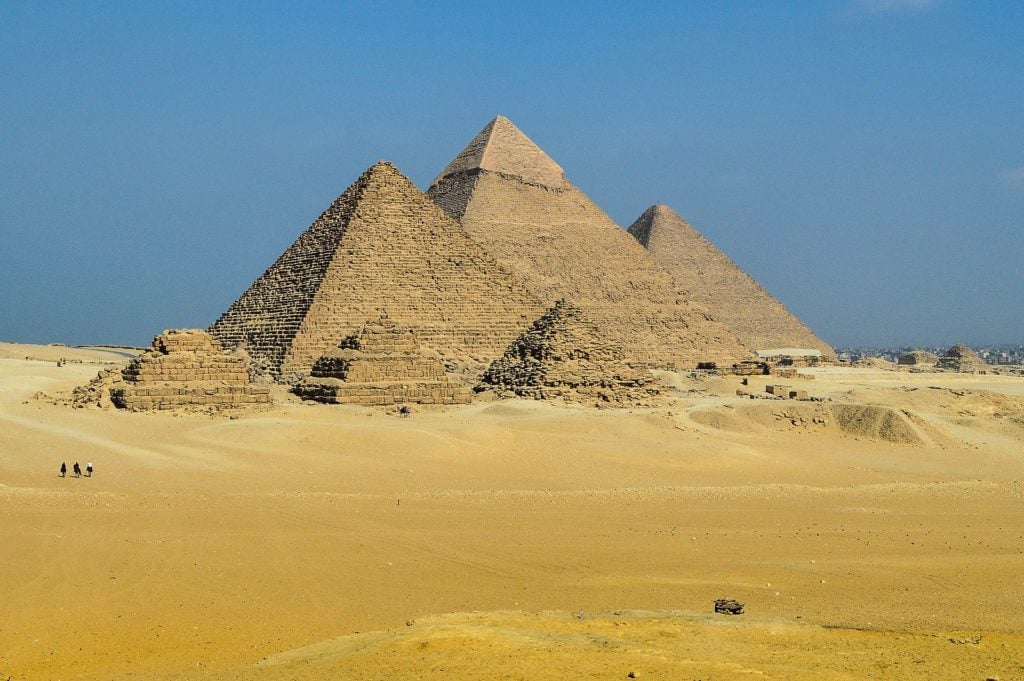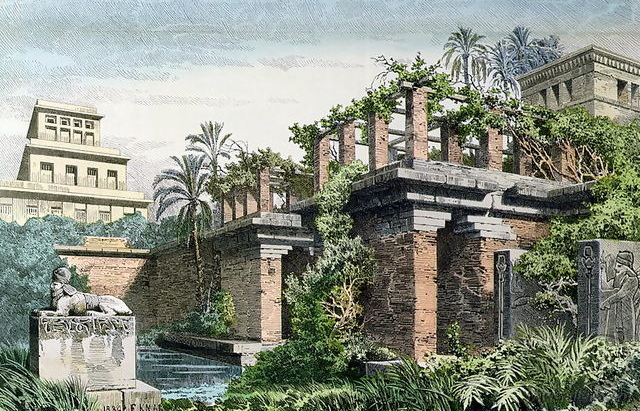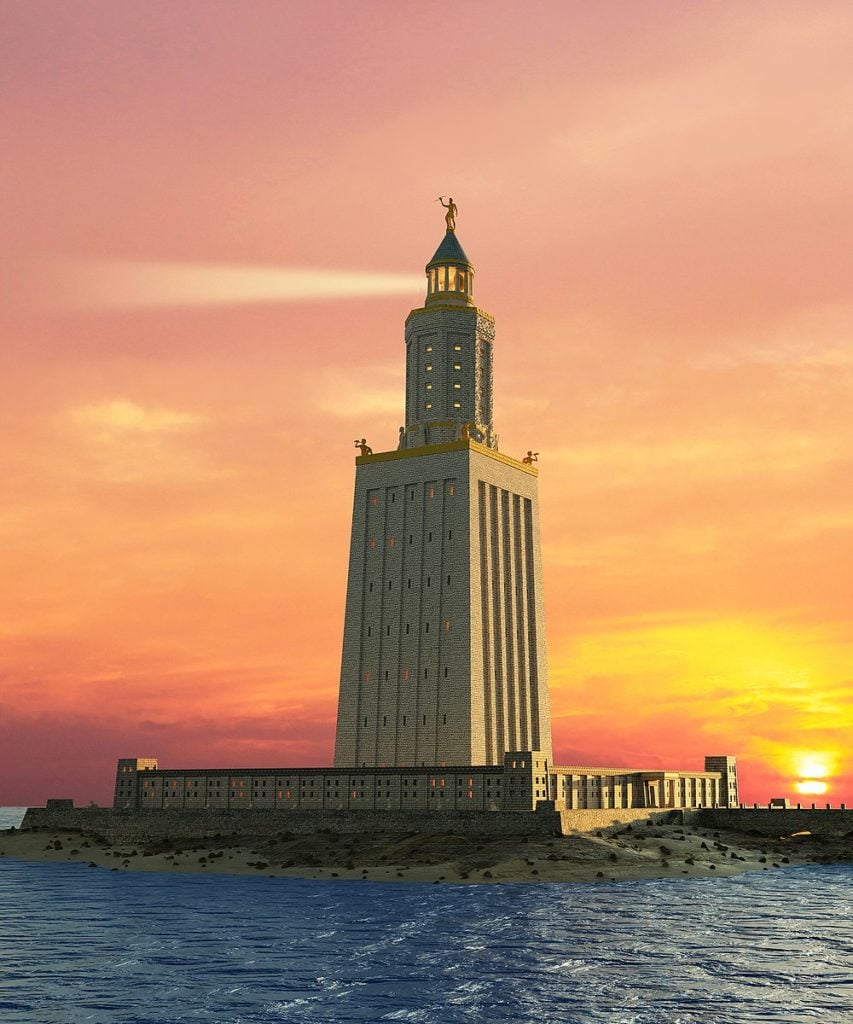
The Seven Wonders of the World, which once captured the imagination of ancient civilizations, have not withstood the test of time.
Only one of the structures on this list has survived to this day—the majestic Great Pyramid of Giza. The rest remain only in recorded history.
The list itself appeared thanks to the ancient Greek mathematician Philo of Byzantium, who lived in the 3rd century BC. Being an outstanding mechanic, as well as a military engineer, he traveled widely and even worked in Rhodes and Alexandria. Scientists believe it was he who was the author of the work “On the Seven Wonders of the World,” which contains descriptions of the outstanding structures of that time.
Many of the marvelous structures met a similar end, allowing us the opportunity to enjoy these wonders of the world only through historical sources.
Hanging Gardens of Babylon

According to legend, the Hanging Gardens of Babylon amazed people with their splendor and engineering dexterity. Despite their wide popularity—of which we are well aware—it is still a semi-legendary structure. Mentions of gardens were found only in the works of ancient authors. Archaeologists have not yet been able to establish either the location of the gardens or traces of their existence.
Researchers disagree on the origin of this grandiose structure. According to one version, it was built by the Babylonian King Nebuchadnezzar II to entertain his wife, Queen Amitis. Another theory suggests the gardens were erected by Queen Semiramis, who ruled Babylon in the 9th century BC.
The gardens consisted of four floors. Each level was both a balcony and a terrace. They were intertwined with mesmerizing plants that hung down to the ground.
After Babylon fell, the plants withered, and the amazing structure was destroyed by frequent earthquakes. However, artists’ canvases serve as a reminder to the splendor of the Hanging Gardens to this day.
Statue of Zeus at Olympia
The great statue of Zeus at Olympia was a giant seated statue, about 12.4 m (41 ft) tall, made by the Greek sculptor Phidias around 435 BCE at the sanctuary of Olympia and erected in the Temple of Zeus. It was one of the Seven Wonders of the ancient world.
©kostas kotsanas pic.twitter.com/J9o7tBxFom
— Arys🏺🪶 (@ArysPan) July 7, 2022
The huge statue of the Thunderer was made from the finest woods and precious metal. The ancient Greeks called sculpture the epitome of male beauty. Zeus sat on a luxurious throne befitting the chief of the gods, while his torso and arms were made out of ivory.
The sculpture was surrounded by bale-reliefs based on ancient myths. They decorated the Olympic temple.
The best Athenian sculptor, Phidias, undertook the creation of such an amazing statue. There is a legend that when he finished the work and asked Zeus if he was satisfied with it, lightning struck the marble floor. This symbolized a positive answer.
However, the masterpiece did not survive to this day. It is believed that the statue was transferred to Constantinople, where it completely burned down during a terrible fire.
Colossus of Rhodes
The Colossus of Rhodes, one of the largest statues ever built and one of the 7 Wonders of the Ancient World. pic.twitter.com/C6ICfqbFoM
— Chris (@Christo83946020) August 24, 2023
A gigantic statue appeared in the port city of Rhodes in 280 BC and welcomed arriving visitors. The sculpture towered high above the roofs of houses, and travelers could see the light from its lamp from miles away.
It was a monument to the sun god Helios, which took twelve years and several tons of bronze to create.
The statue lived a bright but short life, standing in its place for only sixty years. An earthquake in 226 BC knocked the Colossus off his feet and right into the sea.
Mausoleum at Halicarnassus

This building was created by the despotic King Mausolus, from which the word “mausoleum” originates. He intended to build for himself the best tomb in the world and he himself came up with a structure for the future eternal refuge.
Mausolus’ idea was to present the most luxurious building, which would outshine all temples in beauty and size. He managed to turn his dream into reality with the help of famous architects. The mausoleum looked like a giant structure, decorated with columns as well as hundreds of statues of gods, warriors, and animals.
Compared to other wonders on this list, the tomb has become a long-liver. However, a series of massive earthquakes destroyed it gradually between the twelfth and fifteenth centuries.
Temple of Artemis
A reconstruction of the Temple of Artemis in Ephesus, one of the greatest Greek (& later Roman) cities of Anatolia. The structure was famously one of the seven wonders of the ancient world. Today, nothing remains of this once-great building except some solemn columns. pic.twitter.com/gvRdhZn1QX
— βάλλ' εἰς κόρακας🏺🇬🇷 (@meticusdeatenas) August 31, 2023
The splendor of the Temple of Artemis in Ephesus stands today with but a single column, lonely in a wasteland. There were once 127 columns—giant pillars arranged in nine rows that supported the magnificent sanctuary.
The interior decoration of the temple was equivalent to its amazing external splendor. There were sculptures by masters, paintings by famous artists, gold, wood, and marble. In the center was a statue of the goddess herself.
The temple unfortunately lasted only six centuries. Throughout history, it was badly damaged, sacked by the Goths, and flooded by raging waves. In the end, there was almost nothing left of it.
Lighthouse of Alexandria

According to one legend, the architect named Sostratus of Cnidus came up with the idea of creating a structure that would help sailors find their way. He himself sponsored this ambitious project. Five years later, a unique building appeared on the island of Pharos.
The Lighthouse of Alexandria not only served a practical role but also represented a visual indicator of human talent and effort. Its majestic appearance was a demonstration of what man is capable of. Later on, the lighthouse also played an important role in various military conflicts.
This wonder of the world also suffered a tragic fate. Several earthquakes damaged it until one of them finally destroyed the lighthouse.
Great Pyramid of Giza, the Only Wonder Surviving to This Day
The Great Pyramid of Giza.
Learn more: https://t.co/ulRWpcyV6a pic.twitter.com/epee7VvDAa
— Ancient Origins (@ancientorigins) August 25, 2023
The magnificent pyramid in Egypt attracts tourists from all over the world, providing the opportunity to see the oldest of the seven wonders of the world with their own eyes. This is a unique building that is about 4,500 years old.
The modern appearance of the pyramid differs significantly from the original, as it has undergone many restorations. However, when looking at this architectural masterpiece, one is almost transported back to Ancient Egypt. One can only imagine how deep the reverence was for the pharaoh.
The construction of the pyramid took twenty years. At that time, it was a huge task. The pharaoh’s family invested generously in both materials and labor. Historians estimate that about a hundred thousand people worked on the tomb. They were able to create an incredible pyramid, which for a long time was considered the tallest structure in the world.
See all the latest news from Greece and the world at Greekreporter.com. Contact our newsroom to report an update or send your story, photos and videos. Follow GR on Google News and subscribe here to our daily email!



